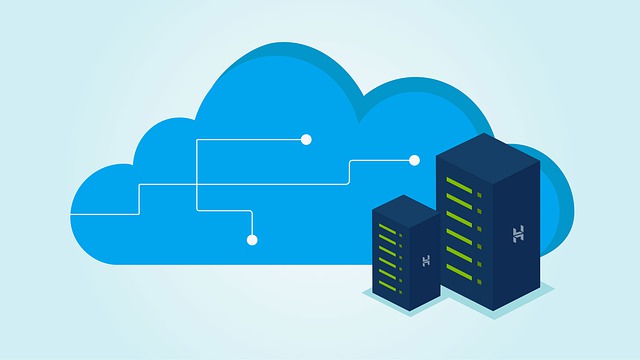Technology is essential for every modern business to function. From computer servers to card payment terminals to camera gear, almost every company in the world relies on some form of tech to get the job done.
This is a contributed post. Please refer to my disclosure for more information.

There’s no denying that technology has completely transformed the world of business in the last century, allowing businesses to communicate with people around the world, store vast amounts of data, and streamline their processes in myriad ways. Yet all good things come with their own set of problems. For all its benefits, technology comes with several risks that, if left unchecked, could cause serious damage to your business. If you’re not careful about how you use your tools and systems, you might find your profits, operations, employees, and security all suffer.
To help you get the most from your technology and avoid any negative consequences, here are the top four risks to your business and how to avoid them.
Online security
Is your business adequately protected against cyber attacks? We live in an increasingly digital age, and criminals are evolving to become even more technologically adept. Any cracks in your security system will eventually be exploited, so you need to ensure you’ve done everything you can to protect yourself. Installing good quality antivirus software on your computer system will offer some protection, as long as you make sure you keep it constantly updated. Passwords are a high-risk area, and it’s essential that you and your staff are using strong passwords that can’t be guessed. Using a password manager is the best way to ensure maximum protection and reduce the risk. This will prevent your team from needing to write down passwords and leave them out for anyone to see.
Many businesses now have a bring-your-own-device (BYOD) policy, which can save a lot of money and enables people to work on the devices they are comfortable with. However, if unchecked, this can create serious risk. These devices are carried from home to work and back every day, so are vulnerable to loss and theft. If there is any confidential data stored on these devices, it could end up in the wrong hands. To prevent this, create a BYOD policy that your staff must agree to. This will outline proper procedures for using their devices for work, including storing files, wiping data, and sending messages.
Scalability
Most businesses start from nothing and then build themselves from the ground up. In the early stages, your technology needs will be very limited and usually restricted by tight budgets. You may need some essential tools like software and a small number of computers, but you’ll be cutting costs where you can. However, as your business grows, you may find yourself bolting new bits of technology into your inventory to accommodate rising demands. But this is where problems are created. Your technology systems should be scalable, and capable of evolving naturally with your business.
Take the example of bookkeeping. In the beginning, it may be easier and cheaper to manage your invoices and expenses with a simple Excel spreadsheet. However, as your business grows, your cash flow will escalate, and you’ll be continually adding new rows and columns and increasingly complicated formulae. It would have been easier to invest in some accounting software from the start.
Avoid this problem by constantly keeping an eye on your technology and considering the future of your business in every decision you make.
Backups
If your offices burn down or a hacker attacks your system and steals all your files, what would happen to your business? Would you be able to get back on track right away, or would all your data be lost for good? It’s always a good idea to plan for the worst in business, just to keep your back covered. And this means backing up all of your data. If you store vast amounts of customer information, creative works, or financial data on your computer system, there is no excuse for not protecting it. Backup all of your business data onto an external hard drive every single day. You should have two or three different hard drives in rotation and always store at least one of them outside the office. This way, if the worst-case scenario does happen, you can retrieve your backup and get up and running straight away. You will avoid potential legal action from clients and a colossal amount of time and money.
Health
You might think computers are harmless, but working with technology can have severe consequences for your employees’ health. If your workers are sitting at a desk for up to eight hours a day, hunched over their computers staring unblinkingly at their screens, they are doing more damage to their bodies than they realize. Excessive use of computers and phones can lead to vision problems and increased stress levels. Sitting at desks for long periods can eventually cause musculoskeletal disorders and increase the risk of obesity and other health issues. The human body evolved for people to be moving around all day and using their innate strength and fitness; not for sitting in uncomfortable chairs.
As an employer, it is your responsibility to ensure your employees are using technology in a healthy way. Promote good posture by investing in either standing desks or ergonomic office chairs to support their backs. Encourage them to take regular breaks every hour to stand up and stretch. If possible, try to limit the amount of time they spend using technology. Hold meetings in person rather than over the internet, or print off documents rather than reading them online.
Help your employees protect their vision by enforcing regular screen breaks, encouraging them to look away from the screen for a few minutes. You could even help them dramatically by investing in some blue-light blocking glasses for those who need them. You can get these from any good opticians or glasses website.
In conclusion, if you want to reduce the technology risk for your business, these four tips are the best place to start. Protect your security, backup your data, scale your technology adoption, and look after your staff’s health.



